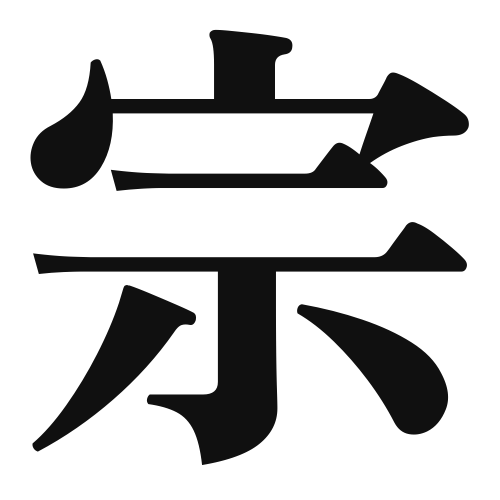1. Overview of Meaning
The kanji “宗” (pronounced “shū” in Japanese) primarily means “religion,” “sect,” or “denomination.” It refers to a system of beliefs or practices, often associated with spirituality or faith.
2. Formation and Radical
The kanji “宗” is a compound character, which means it is formed by combining different elements. It is classified as a phonetic-ideographic character (形声文字), where the left part (宀) indicates a connection to a house or dwelling, and the right part (宗) suggests a sense of lineage or ancestry.
The radical for “宗” is 宀, which is related to buildings or structures, often implying a place of worship or gathering.
3. Examples of Usage
Common words and phrases that include “宗” are:
- 宗教 (shūkyō) – religion
- 宗派 (shūha) – sect or denomination
Example sentence in daily conversation:
「彼は仏教の宗派に属しています。」
(He belongs to a sect of Buddhism.)
4. Synonyms and Antonyms
Similar kanji with related meanings include:
- 教 (kyō) – teaching or doctrine, which emphasizes the educational aspect of religion.
- 信 (shin) – faith or belief, focusing on the personal aspect of spirituality.
Antonyms include:
- 無宗教 (muzuukyou) – non-religious or secular, indicating a lack of religious affiliation.
5. Cultural and Historical Background
The kanji “宗” has significant ties to Japanese culture, particularly in the context of various religious practices such as Shinto and Buddhism. It reflects the diverse spiritual landscape of Japan.
Proverbs and idiomatic expressions related to “宗” include:
- 宗教は人を結びつける (Shūkyō wa hito o musubitsukeru) – Religion brings people together.
This highlights the role of religion in fostering community and connection among individuals.
